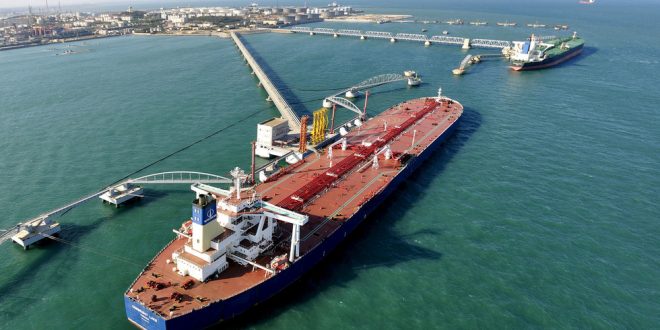China is slashing liquefied natural gas purchases as soaring global prices deepen import losses and pandemic lockdowns throttle domestic demand.
Imports in the first quarter fell 14% from the same period last year, according to shipping data, and private companies are spurning offers to use once-highly coveted slots at state-owned receiving terminals. Consultancy Wood Mackenzie Ltd. said it recently revised down its gas demand forecast for the country through 2026 due to economic pressures and high prices.
The slowdown underscores how China’s strict measures to control the virus are rippling outside its borders. The country’s breakneck consumption growth made it the world’s biggest LNG importer last year and contributed to soaring global prices. A drop in spot LNG demand now would mean more supply available to be rerouted to Europe as it cuts dependence on Russian pipeline deliveries.
“Signs of gas demand destruction are appearing in China’s industrial sector,” said Lujia Cao, a gas analyst with BloombergNEF. “Weak demand and prohibitively high LNG prices are curbing importers’ buying interest.”
Spot purchases have borne the brunt of the impact, as prices have soared above those contracted cargoes and pipeline volumes tied to oil, where the gains have been less stratospheric. The surge in spot prices has made it uneconomic to sell into the domestic market, where rates are regulated. Several private firms have canceled plans to use state-owned terminals for imports to avoid the high prices.
The rising import costs have led state-owned China National Petroleum Corp. to boost the regulated rates to industrial users by about 35%. Trucked LNG sold to factories, as close as the country has to an unregulated domestic market, jumped to an all-time high price on March 1 and has remained near that level ever since.
Ceramics Halt
“No one wants to risk importing gas at higher costs than domestic downstream offering prices,” said Jingjing Du, a senior consultant at Wood Mackenzie.
Higher gas costs could curb generation at power plants and force curtailments in energy-intensive industries. For example, about 32% of the country’s ceramics production lines halted operation in the first half of March, according to BloombergNEF.
Chinese gas demand will rise 8.2% this year, slowing from 12% in 2021, as elevated LNG prices curb demand, China National Petroleum Corp.’s Economic and Technology Research Institute said in a report released Tuesday.
On top of that, two of China’s biggest gateways for LNG imports, Shanghai and Guangzhou, are at the center of the country’s worst reported outbreak since the pandemic began. Several factories in Shanghai and neighboring provinces have already shut down or cut back operations, according to the Shanghai Shipping Exchange, further reducing energy demand.
Natural gas is still seen as a long-term pillar of the country’s plan to transition to cleaner energy. The country’s three state-owned oil majors have all promised to gear drilling efforts toward increasing gas output while keeping oil production steady.
They’re also looking to increase pipeline supplies from neighboring nations, especially Russia, where the Power of Siberia conduit continues to increase toward full flows. PetroChina Co. signed a second pipeline deal with Russia’s Gazprom PJSC just before Russia began its invasion of Ukraine.
“China may import as much piped gas as possible through its contracts,” said BloomberNEF’s Cao.

 Iran Energy News Oil, Gas, Petrochemical and Energy Field Specialized Channel
Iran Energy News Oil, Gas, Petrochemical and Energy Field Specialized Channel



